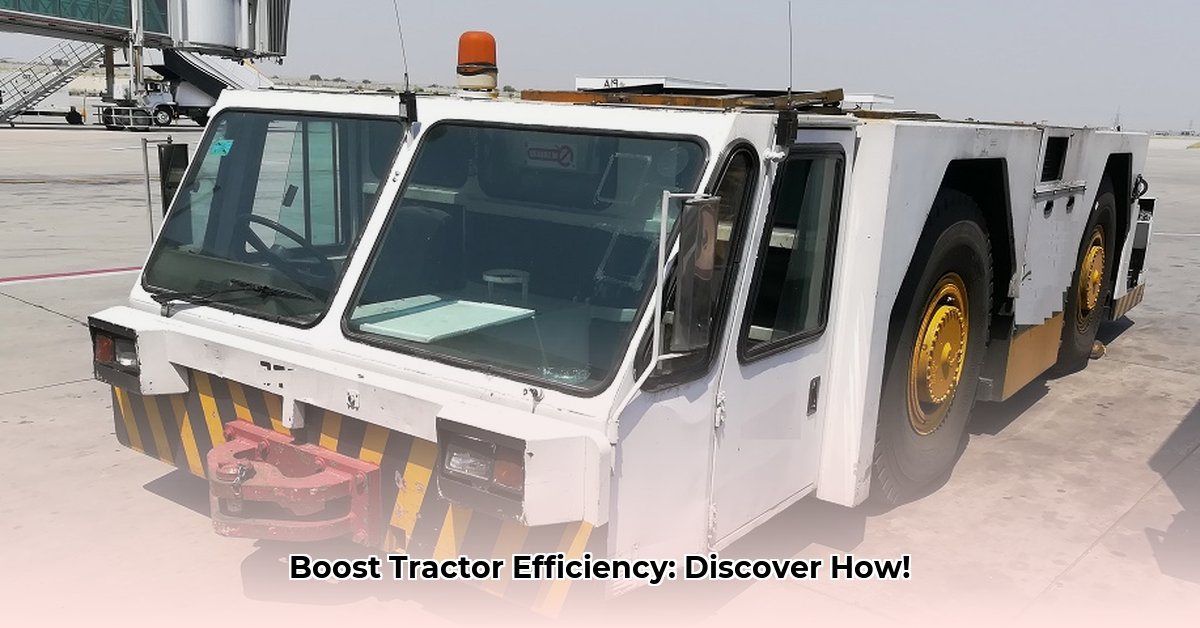
Moving aircraft efficiently and safely on the ground is critical for airport operations. For decades, diesel-powered pushback tractors have been the industry standard. However, advancements in technology and a growing emphasis on sustainability are driving a shift towards more efficient and environmentally friendly alternatives. This guide examines the evolving landscape of pushback tractors, offering a comprehensive comparison of conventional and advanced systems and actionable insights for all stakeholders. For more information on tractor parts, check out this resource.
Conventional vs. Towbarless (TBL) Electric Tractors
The core of airport ground handling often revolves around moving large aircraft. Traditional diesel-powered pushback tractors remain prevalent, but towbarless (TBL) electric tractors are rapidly gaining traction. The key difference lies in the connection method: conventional tractors use a physical towbar connecting them to the aircraft's nose gear, while TBL tractors employ a different system, often involving direct contact with the aircraft's wheels.
Comparative Analysis:
| Feature | Conventional Pushback Tractor | Towbarless Electric Pushback Tractor |
|---|---|---|
| Power Source | Primarily diesel; higher emissions, louder operation | Electric; lower emissions, quieter operation |
| Maneuverability | Less precise; requires larger turning radius | More precise control; potentially smaller turning radius |
| Maintenance | Generally simpler; fewer complex components | More sophisticated electronics; specialized maintenance |
| Upfront Cost | Lower initial investment | Higher initial investment |
| Environmental Impact | Higher fuel consumption; significant emissions | Lower energy consumption; greatly reduced emissions |
TBL electric tractors offer significant environmental advantages, reducing noise and emissions. This makes them attractive to airports prioritizing sustainability. However, the higher initial investment requires a detailed cost-benefit analysis to justify their adoption. A phased approach, gradually replacing older diesel tractors, may be a prudent strategy for many airports.
Advanced Technologies: Semi-Robotic and Autonomous Systems
Automation is transforming the pushback tractor industry. Systems such as TaxiBot (and similar technologies under development) provide semi-autonomous control, sharing the workload between the pilot and the machine. The ultimate goal—fully autonomous pushback tractors—promises to significantly increase efficiency and reduce operational costs.
However, realizing this vision presents considerable challenges. These include developing robust safety systems, ensuring reliable communication between tractor and aircraft, and establishing stringent cybersecurity protocols. Regulatory hurdles are also substantial, demanding updated safety standards and certification procedures to accommodate these advancements.
Cost-Benefit Analysis: A Holistic Approach
The total cost of ownership for pushback tractors extends beyond the initial purchase price. A comprehensive cost-benefit analysis must account for fuel/electricity consumption, maintenance, repairs, and environmental impact throughout the tractor's lifespan. While TBL electric tractors might have higher upfront costs, long-term savings on fuel and reduced maintenance expenses can offset this, depending on usage patterns and local electricity prices.
Actionable Insights for Stakeholders
The transition to more efficient pushback tractors necessitates a collaborative approach. The following recommendations cater to the specific needs and responsibilities of different stakeholders:
1. Airport Operators:
- Implement pilot programs to evaluate TBL electric tractors' performance within their operational context.
- Develop and implement comprehensive safety procedures for both conventional and automated systems.
- Invest in the necessary charging infrastructure to support a fleet of electric tractors.
2. Aircraft Manufacturers:
- Standardize nose gear designs for enhanced compatibility with various pushback tractor models.
- Collaborate with GSE manufacturers to optimize interface compatibility and integration.
- Explore integration of advanced sensors for improved automated docking capabilities.
3. Ground Support Equipment (GSE) Manufacturers:
- Improve compatibility between TBL tractors and a wide range of aircraft types.
- Develop efficient and powerful electric powertrains.
- Prioritize safety and automation features in new tractor designs.
4. Airlines:
- Conduct thorough cost-benefit analyses to assess the financial implications of adopting TBL electric tractors.
- Investigate fuel-saving technologies, such as TaxiBot, to reduce operational expenditures.
- Implement comprehensive training programs for ground crews to ensure the safe and efficient operation of new equipment.
Regulatory Landscape and Safety Considerations
The rapid pace of technological innovation necessitates a dynamic regulatory framework. Safety standards and certification processes must adapt to incorporate electric and semi-autonomous systems, addressing potential cybersecurity vulnerabilities and developing clear emergency response protocols. This requires ongoing collaboration between manufacturers, regulatory bodies, and airport authorities.
Conclusion: A Path Towards Sustainable Ground Operations
The shift towards more efficient and environmentally friendly pushback tractors presents significant opportunities to improve airport operations. A collaborative effort among all stakeholders is crucial to navigating the technological and regulatory challenges, ensuring safe, efficient, and sustainable ground support for years to come. Continuous innovation and data-driven decision-making are fundamental to realizing this vision.